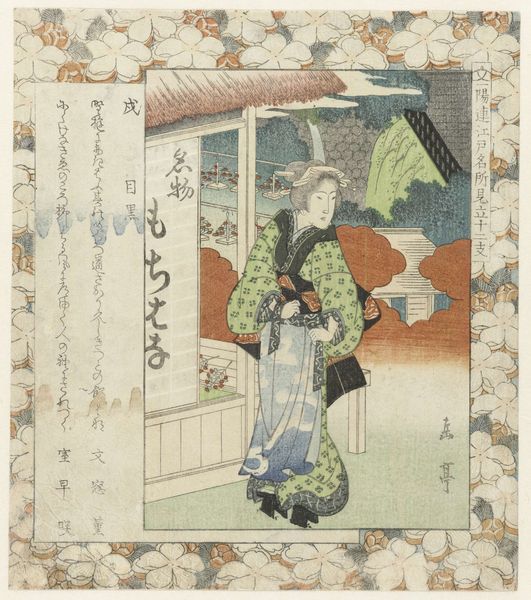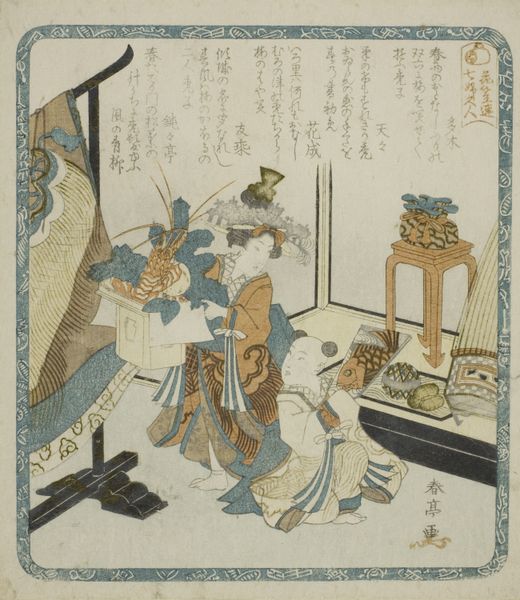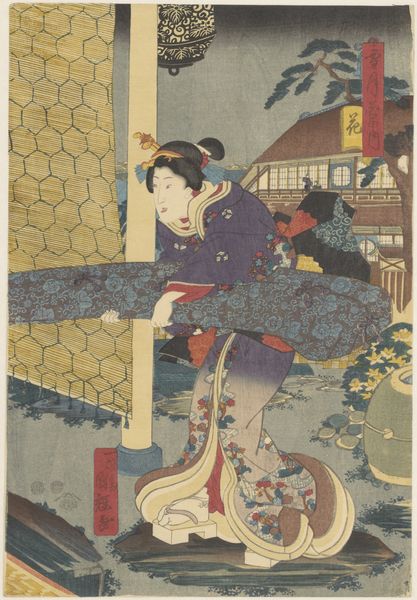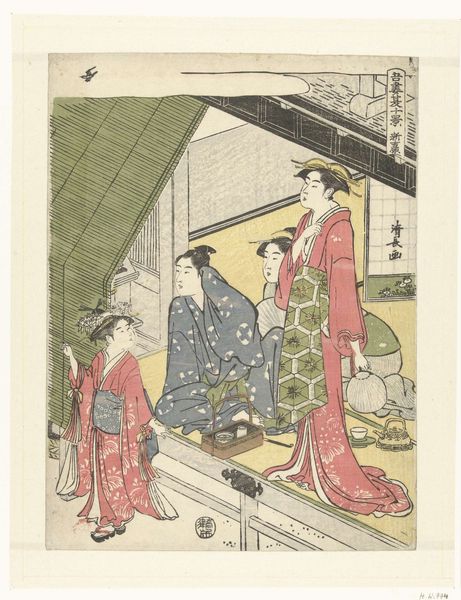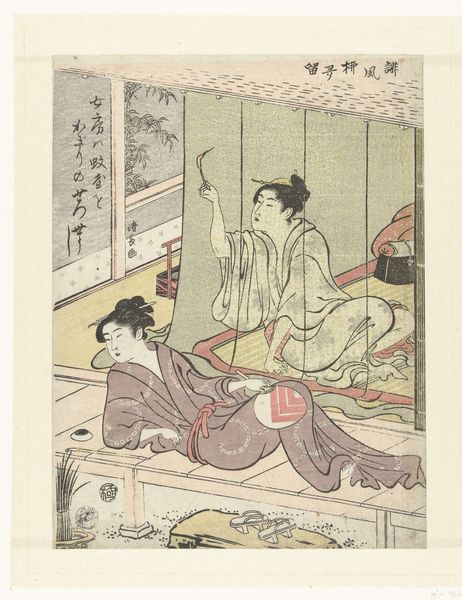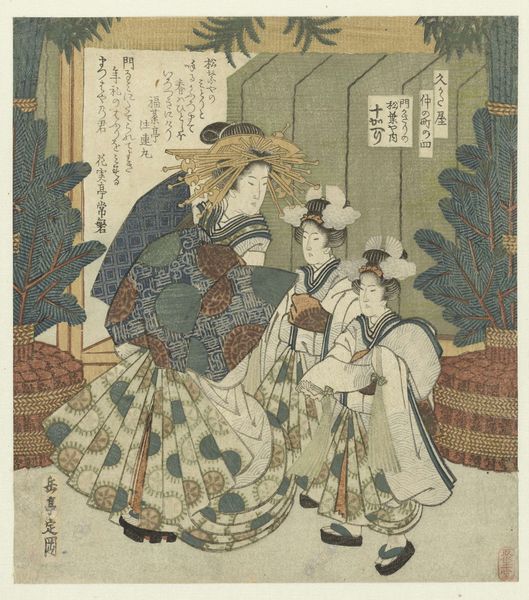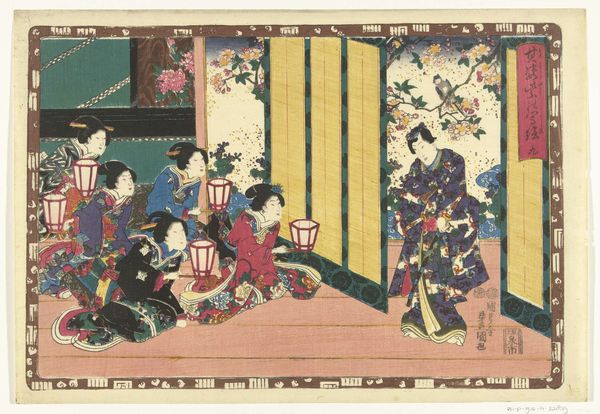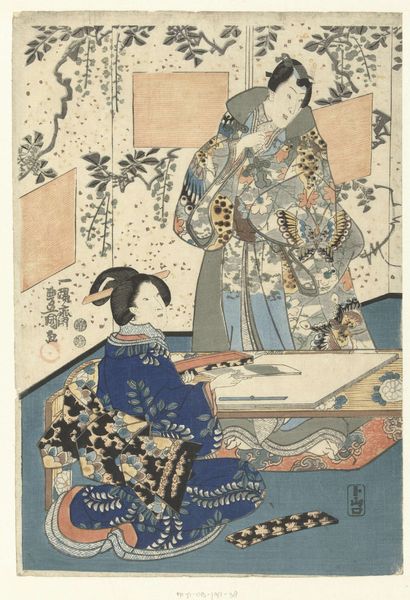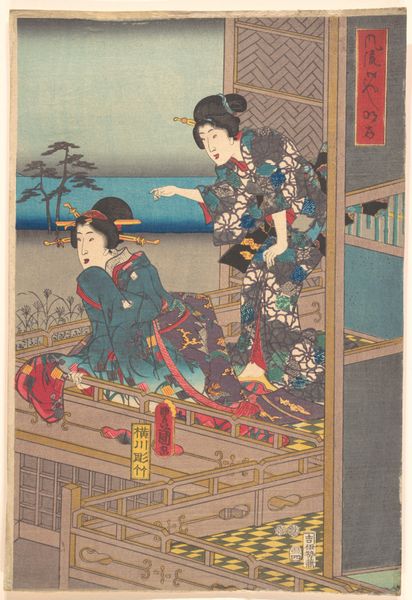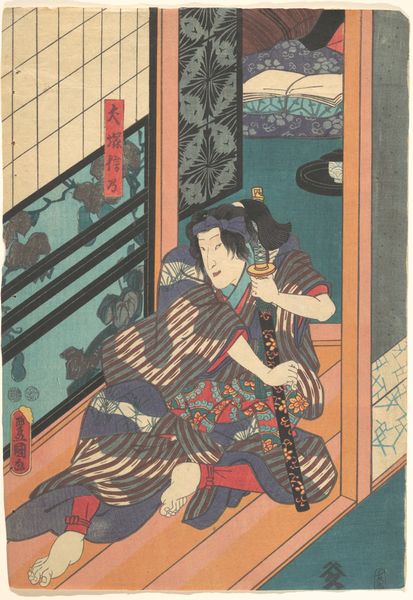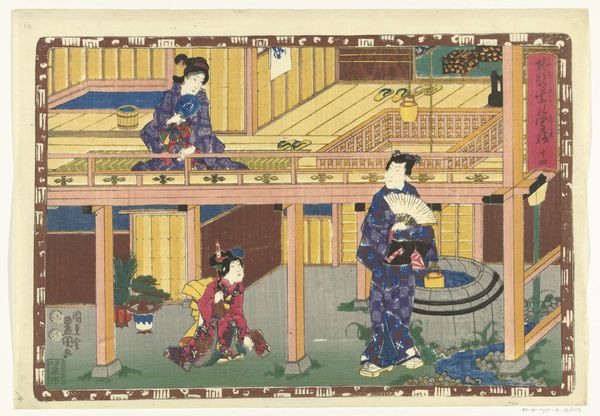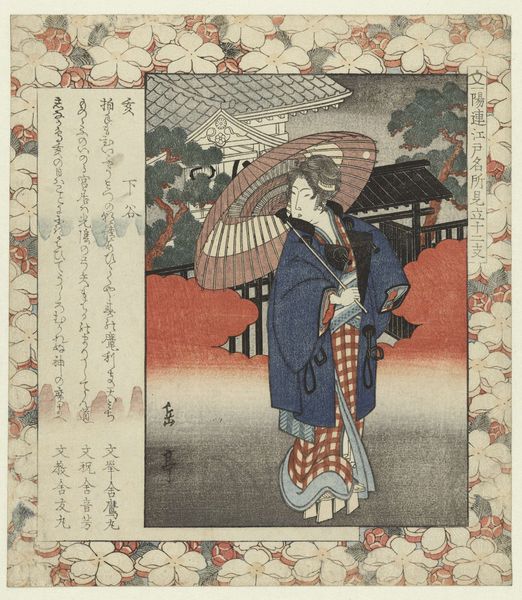
print, woodblock-print
#
portrait
#
water colours
# print
#
asian-art
#
ukiyo-e
#
woodblock-print
#
orientalism
#
watercolour illustration
#
watercolor
Dimensions: height 211 mm, width 186 mm
Copyright: Rijks Museum: Open Domain
Curator: This delicate woodblock print before us, titled "Tijger: de helling bij Kagura" and crafted around 1827 by Yashima Gakutei, transports us to Edo-period Japan. The Rijksmuseum is fortunate to house it within its collection of ukiyo-e art. Editor: It feels almost dreamlike, doesn't it? The floral border is so vivid and frames the scene like a memory. There is such a strong interplay between the delicate patterns of the women's robes and the implied stillness of the temple. Curator: Indeed. The artwork showcases two elegantly dressed women pausing near what appears to be Kagurazaka Hill, with a small shrine subtly positioned in the background. The cherry blossom border is so ubiquitous to these prints. Editor: And note the choice of setting, Kagurazaka – an area known for its geishas and teahouses, a space where societal expectations for women were both amplified and subtly subverted. Gakutei places these figures at a point of intersectionality; women, beauty, piety, and location, within the shifting social fabric of Edo society. Curator: Gakutei's expertise in printmaking becomes clear when examining the composition. Observe the intricate layering of colors, achieved by carving separate woodblocks for each hue, and the carefully controlled gradations that contribute depth and nuance to the scene. Editor: The artist uses color strategically, wouldn't you agree? The bright white blossoms set against the deeper reds and blues of the garments almost push forward from the image. Also, one wonders, what might the gaze of the woman on the right tell us? It almost projects agency; we almost anticipate some action, some disruption. It certainly draws us into imagining the story that is implied. Curator: That's a particularly salient point to notice. The art of ukiyo-e itself, "pictures of the floating world", gives rise to a democratization of imagery, of new subjects in fine art, shifting from classical, more institutional themes towards everyday urban experiences and perspectives. It allows us today to access the society in the visual culture of Edo Japan in ways other artistic forms perhaps do not. Editor: Absolutely. Analyzing this piece further can offer ways of approaching ukiyo-e that bring awareness to intersectional issues. Gakutei, perhaps unknowingly, initiates a contemporary dialogue, where these works from the Edo period contribute new language towards discussions about social justice in today’s world. Curator: I agree. A stunning intersection between art and contemporary experience. Editor: Certainly a testament to art’s lasting ability to make statements.
Comments
No comments
Be the first to comment and join the conversation on the ultimate creative platform.

